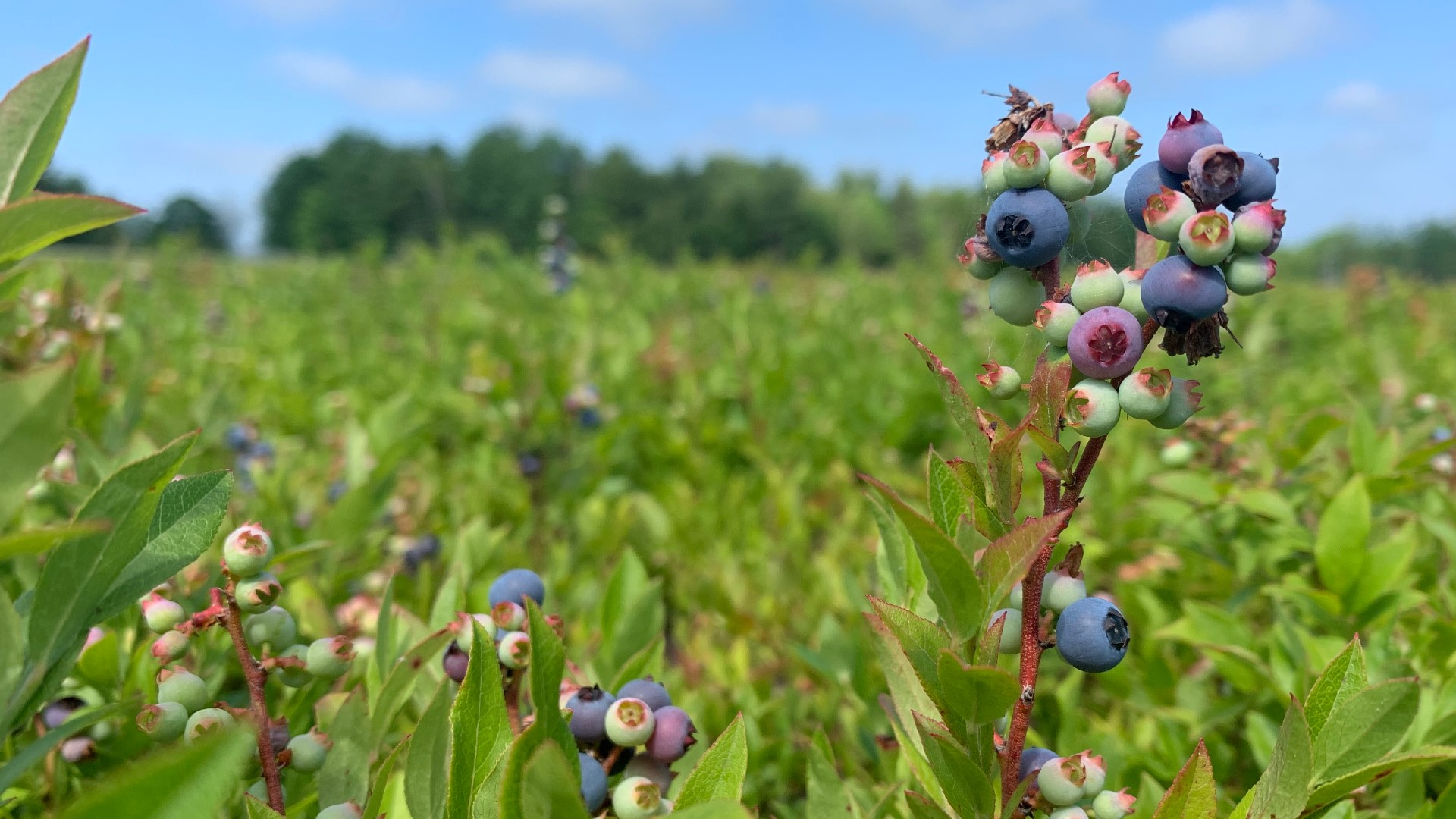ROCKPORT, Maine — Finding new means of renewable energy is an ongoing goal in Maine, especially when it benefits more than one industry. That's why a new solar project happening in Rockport is exciting to leaders in the agriculture and energy worlds, as our state continues to move toward a greener and more sustainable future.
Last week, Boston-based solar developer and community solar service provider BlueWave Solar announced the sale of a 10-acre solar project to solar power producer Navisun. This is a "dual-use" agrivoltaic project, meaning it won't take up space for just one purpose. These solar panels will be installed on a wild blueberry field to promote both clean energy and farming. According to BlueWave Solar, this is the first project of its kind in Maine.
The University of Maine Cooperative Extension started working with BlueWave Solar last fall and will be a partner in this project, using it as an educational model. The UMaine team will study the effect of solar equipment on the blueberry field to determine whether this kind of management is practical for farmers -- and, if so, what kind of devices for harvesting, mowing, and spraying are best.
Lily Calderwood is an extension wild blueberry specialist who is working on this project. She says this is the first season that the UMaine team will be collecting a lot of data. According to Calderwood, the wild blueberry crop is resilient, but it has a shallow root, so it could be vulnerable to disturbance. The long-term goal over a six-year period is to see whether the plants can fully recover and get back to their original yield and quality.
"Maine farmers are open to new ideas and open to these new technologies and (are) working with them rather than fighting against them, which is encouraging," Calderwood said about general reaction to the project, noting there are 385 growers in Maine, and the land used covers about 36,000 acres. "It really is the way forward."
Dan Burgess, the director of the Governor's Energy Office, agrees. He says Maine has some of the most ambitious renewable energy and greenhouse gas reduction targets in the country. Dual-use projects are a good way to try to reach these goals without interrupting other endeavors. Burgess says he's excited about the potential.
"The opportunity to learn from what we're seeing across the region and across the world on dual-use projects really, I think, is exciting -- and opens up another opportunity for some agricultural facilities," Burgess explained.
Calderwood says they will likely explore the compatibility of other crops and solar panels eventually. The panels for this project are expected to be built within the next few weeks.

